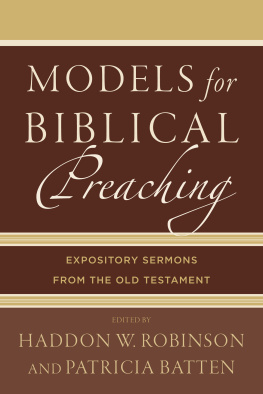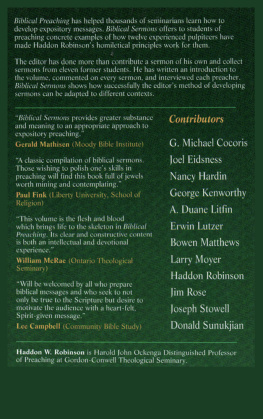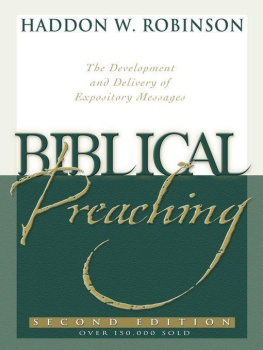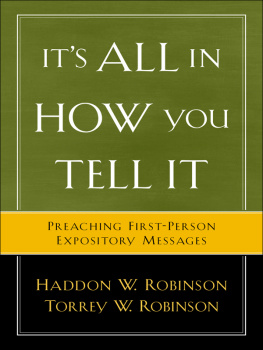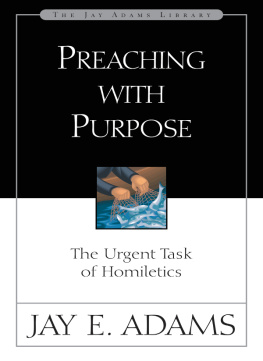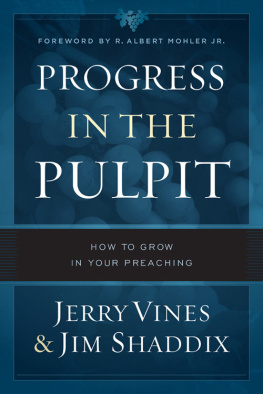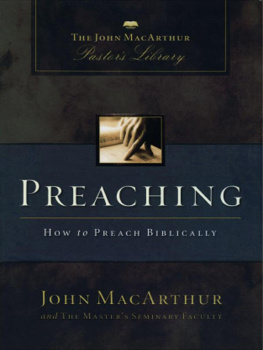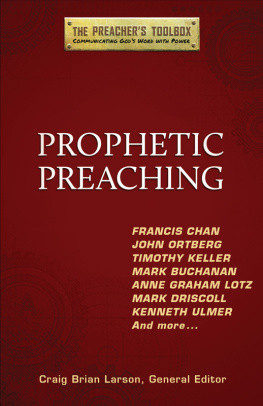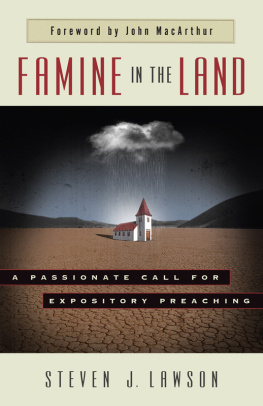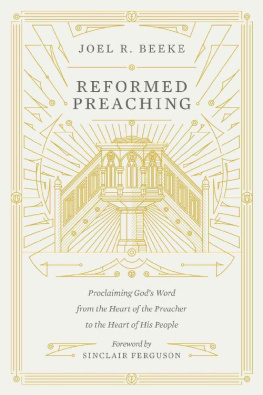Haddon W. Robinson - Models for Biblical Preaching
Here you can read online Haddon W. Robinson - Models for Biblical Preaching full text of the book (entire story) in english for free. Download pdf and epub, get meaning, cover and reviews about this ebook. year: 2014, publisher: Baker Publishing Group, genre: Religion. Description of the work, (preface) as well as reviews are available. Best literature library LitArk.com created for fans of good reading and offers a wide selection of genres:
Romance novel
Science fiction
Adventure
Detective
Science
History
Home and family
Prose
Art
Politics
Computer
Non-fiction
Religion
Business
Children
Humor
Choose a favorite category and find really read worthwhile books. Enjoy immersion in the world of imagination, feel the emotions of the characters or learn something new for yourself, make an fascinating discovery.
- Book:Models for Biblical Preaching
- Author:
- Publisher:Baker Publishing Group
- Genre:
- Year:2014
- Rating:3 / 5
- Favourites:Add to favourites
- Your mark:
- 60
- 1
- 2
- 3
- 4
- 5
Models for Biblical Preaching: summary, description and annotation
We offer to read an annotation, description, summary or preface (depends on what the author of the book "Models for Biblical Preaching" wrote himself). If you haven't found the necessary information about the book — write in the comments, we will try to find it.
Models for Biblical Preaching — read online for free the complete book (whole text) full work
Below is the text of the book, divided by pages. System saving the place of the last page read, allows you to conveniently read the book "Models for Biblical Preaching" online for free, without having to search again every time where you left off. Put a bookmark, and you can go to the page where you finished reading at any time.
Font size:
Interval:
Bookmark:
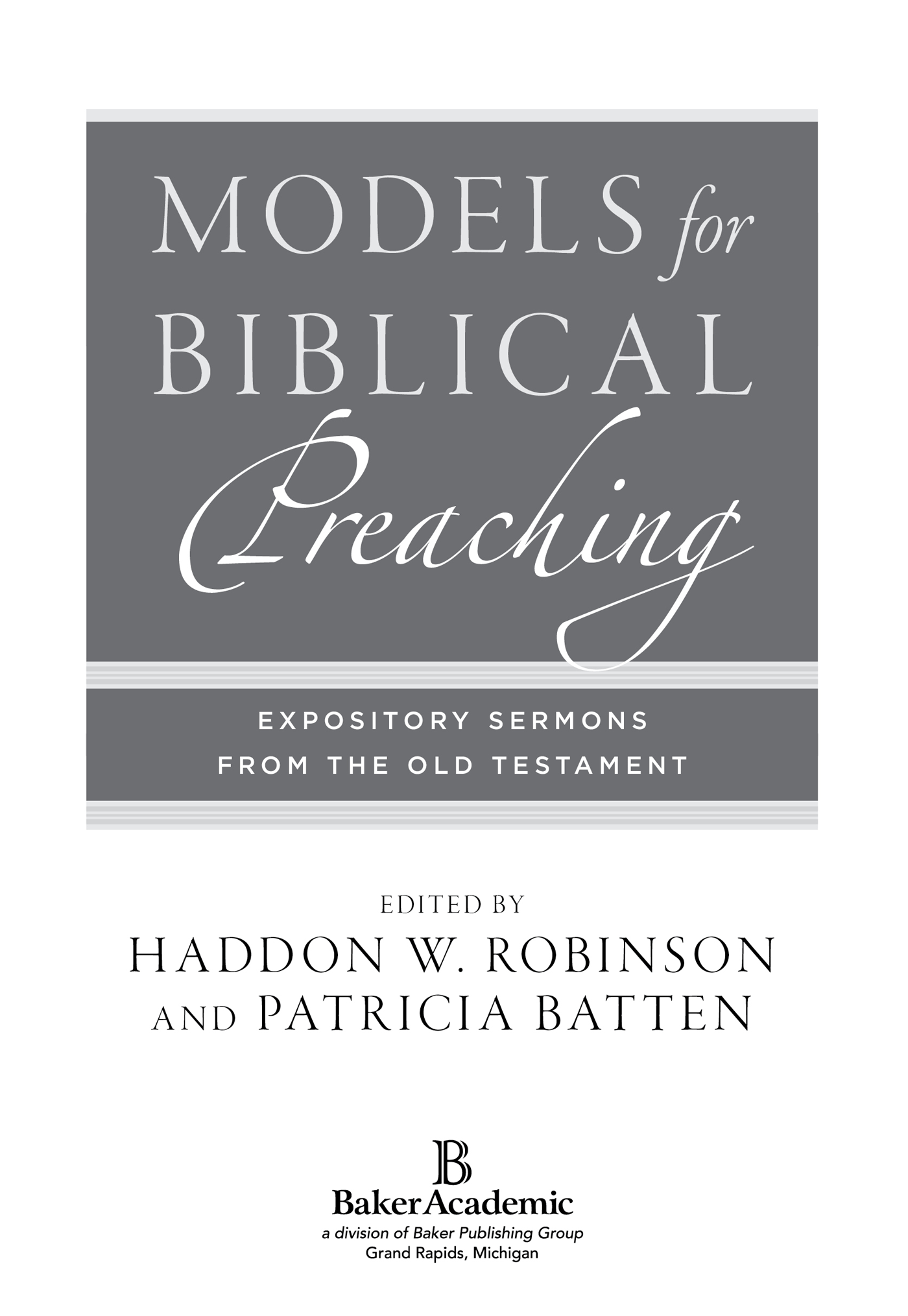
2014 by Haddon W. Robinson and Patricia Batten
Published by Baker Academic
a division of Baker Publishing Group
P.O. Box 6287, Grand Rapids, MI 49516-6287
www . bakeracademic . com
Ebook edition created 2014
All rights reserved. No part of this publication may be reproduced, stored in a retrieval system, or transmitted in any form or by any meansfor example, electronic, photocopy, recordingwithout the prior written permission of the publisher. The only exception is brief quotations in printed reviews.
Library of Congress Cataloging-in-Publication Data is on file at the Library of Congress, Washington, DC.
ISBN 978-1-4412-4569-4
Unless otherwise indicated, Scripture quotations are from the Holy Bible, New International Version. NIV. Copyright 1973, 1978, 1984, 2011 by Biblica, Inc. Used by permission of Zondervan. All rights reserved worldwide. www.zondervan.com
Scripture quotations labeled NASB are from the New American Standard Bible, copyright 1960, 1962, 1963, 1968, 1971, 1972, 1973, 1975, 1977, 1995 by The Lockman Foundation. Used by permission.
Scripture quotations labeled NET are from the NET BIBLE, copyright 2003 by Biblical Studies Press, LLC. www.netbible.com. Used by permission. All rights reserved.
Cover
Title Page
Copyright Page
A Word to the Reader
1. Climbing Test Mountain: Genesis 22:119
Bryan Wilkerson
2. How to Say Gods Name: Exodus 20:7
Eric Dokken
3. The Story of the Left-Handed Assassin and the Obese King: Judges 3:1230
Steve Mathewson
4. The Story of the Worship Leader Who Lost His Song: Psalm 73
Patricia Batten
5. Sounds That Make a Noise: Proverbs 22:1
Sid Buzzell
6. Ego Adjustment: Ecclesiastes 3:915
Scott Wenig
7. Overhearing a Counseling Session: Isaiah 43:13a
Ramona Spilman
8. Training the Mouth of a Preachers Kid: Jeremiah 1
Kent Edwards
Torrey Robinson
10. Jonahs Shady Outlook from His Sunny Lookout: Jonah 14
Matthew Kim
11. Can God Be Both Just and Loving? Topical
Chris Dolson
Back Cover
T his is a collection of sermons based on the Old Testament. Many Christians might dismiss this effort as a waste of time. They wonder why anyone would bother with the Old Testament when everyone is attracted to whats new. Walk down the aisle of a local supermarket and new is everywhere. From chips and dips to brooms and mops, new moves the merchandise. One well-known evangelical leader reports that he doesnt preach the Old Testament, only the New. He simply uses the Old Testament to illustrate New Testament teachings. Others would agree with him that the best preaching comes from passages written by Paul, Peter, James, John, Matthew, Mark, or Lukethose that are part of the New Testament.
Perhaps if we called the first thirty-nine books of the Bible the First Testament they would receive a heartier welcome. After all, the First Testament was the only Bible the first-century church possessed. As Christians gathered for teaching and worship, someone in the group would open up to a God-breathed passage from the First Testament, read it slowly, and teach what it said.
Thats what the preachers who contributed to this array of sermons tried to do. Each one believes that Christians who dont regularly read or study the First Testament are losing part of our spiritual heritage.
The sermons in this collection were prepared for listeners in the twenty-first century AD. That presents challenges both for preachers and for their modern audiences. From the written conversations that follow the sermons, its clear that each preacher wrestled not only with the message of the text but also with how that message might be heard by listeners today. How do you take passages written in the long ago and far away and help modern men and women see the eternal significance? That is a challenge whether the passage is from Leviticus or Luke.
The preachers who contributed sermons to this collection speak to all kinds of audiences. Most of the sermons were addressed to church congregations. A couple were presented to seminary audiences. One was given as an after-dinner talk. Some were preached to crowds of several thousand while others were delivered to much smaller audiences. Two were prepared and preached by women. One is a first-person narrative sermon. Keep in mind that none of the sermons were prepared with a book like this or a reader like you in mind; rather they are the product of each contributors ordinary pulpit ministry.
All of the contributors to this volume share one thing in common: they were students of Haddon Robinson at either Denver Seminary or Gordon-Conwell Seminary. Clearly, they are not clones. They gleaned what they could use from class and put some other teaching aside. They talked about that in the conversations we had together. They are their own people.
These printed sermons resemble cadavers. Cadavers are lifeless bodies that medical students dissect to discover how muscle, sinew, and nerve are put together. While printed sermons fall far short of being living sermons with breath and fire and spirit, it is profitable to study them and see what the preachers intended to do and how they planned for the sermon to have life and coherence. In what follows, eleven preachers offer sermons on the First Testament. All but one are expository. The final sermon is a topical exposition, but we have included it to demonstrate how an evangelistic sermon can be put together.
How can this collection best be used? You could simply sit back and read each sermon, allowing God to speak to you again through his Word. However, if you want to learn how each preacher works to prepare messages every week, then read the interviews after each sermon to get a look at the creative process.
Quite a bit of content in this collection may need further explanation. If you are a student of sermons, you would be helped by reading Haddon Robinsons Biblical Preaching , the book that explains the theory on which these sermons are based.
God bless you as you hear these passages from the First Testament again for the first time.
Climbing Test Mountain
Genesis 22:119
B RYAN W ILKERSON
Bryan Wilkerson is senior pastor of Grace Chapel in Lexington, Massachusetts. He is the author of Living God s Story and a frequent contributor to Preaching Today and Leadership Journal .
S o far on this journey weve gone canoeing and caving. Weve taken a road trip and walked in the woods. How about we finish with some mountain climbing? If youre a traveler, mountains represent the ultimate challenge. They are a true test of courage, skill, stamina, and commitment.
Think about how many important things happen on the tops of mountains in the Bible. Noahs ark comes to rest on top of Mount Ararat. Moses receives the Ten Commandments on Mount Sinai. Elijah defeats the prophets of Baal on Mount Carmel. The temple is built on Mount Zion. Jesus preached his most famous sermon on a mountainside, was crucified on a hill called Calvary, and ascended into heaven from the Mount of Olives.
So we shouldnt be surprised that Abrahams journey eventually leads to a mountain, and that climbing that mountain becomes the ultimate test of his faith. This morning were going to conclude our series with one of the most compelling and disturbing stories in all of the Bible. The message is titled Climbing Test Mountain and our text is Genesis 22.
Some time later God tested Abraham. He said to him, Abraham!
Here I am, he replied.
Font size:
Interval:
Bookmark:
Similar books «Models for Biblical Preaching»
Look at similar books to Models for Biblical Preaching. We have selected literature similar in name and meaning in the hope of providing readers with more options to find new, interesting, not yet read works.
Discussion, reviews of the book Models for Biblical Preaching and just readers' own opinions. Leave your comments, write what you think about the work, its meaning or the main characters. Specify what exactly you liked and what you didn't like, and why you think so.

